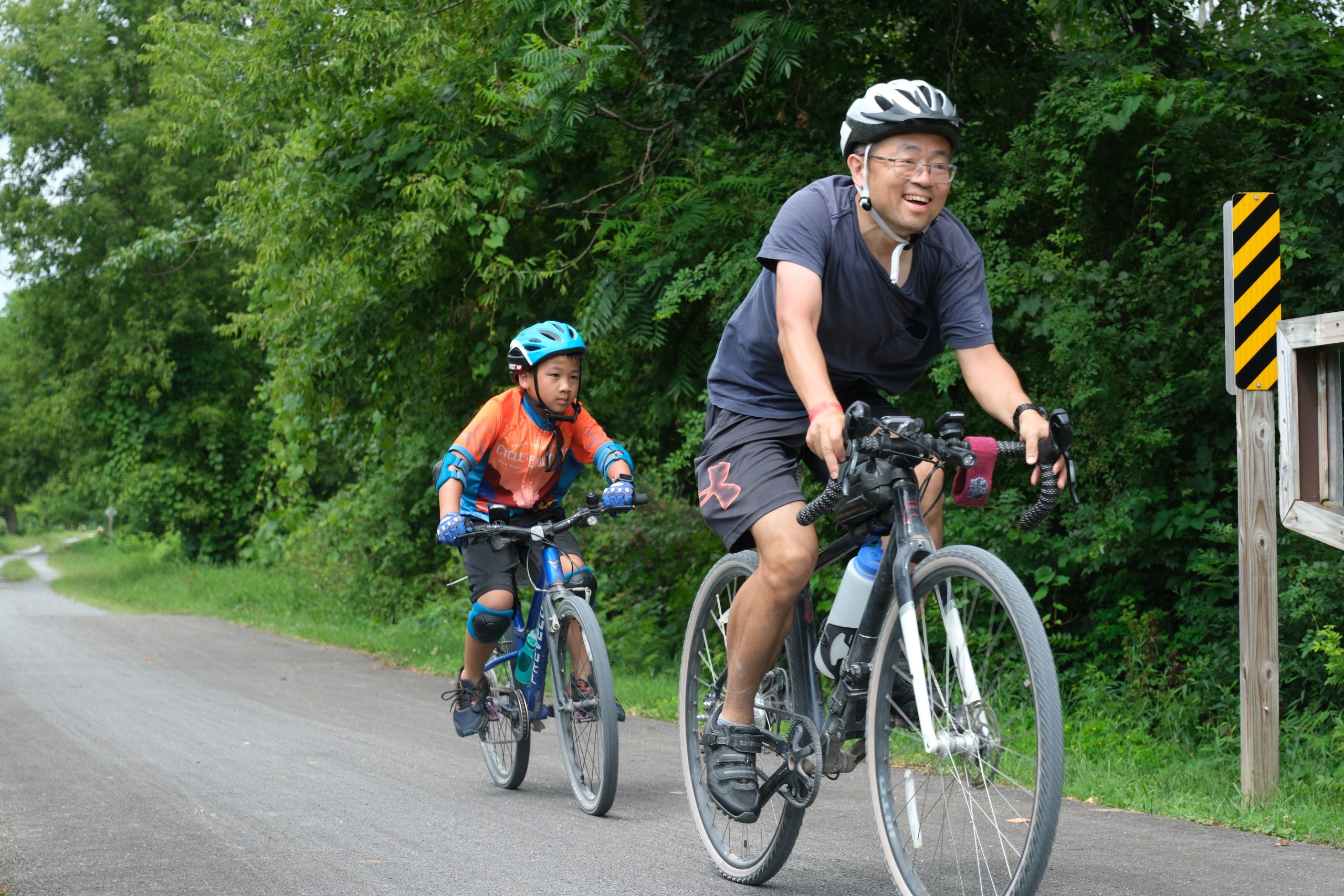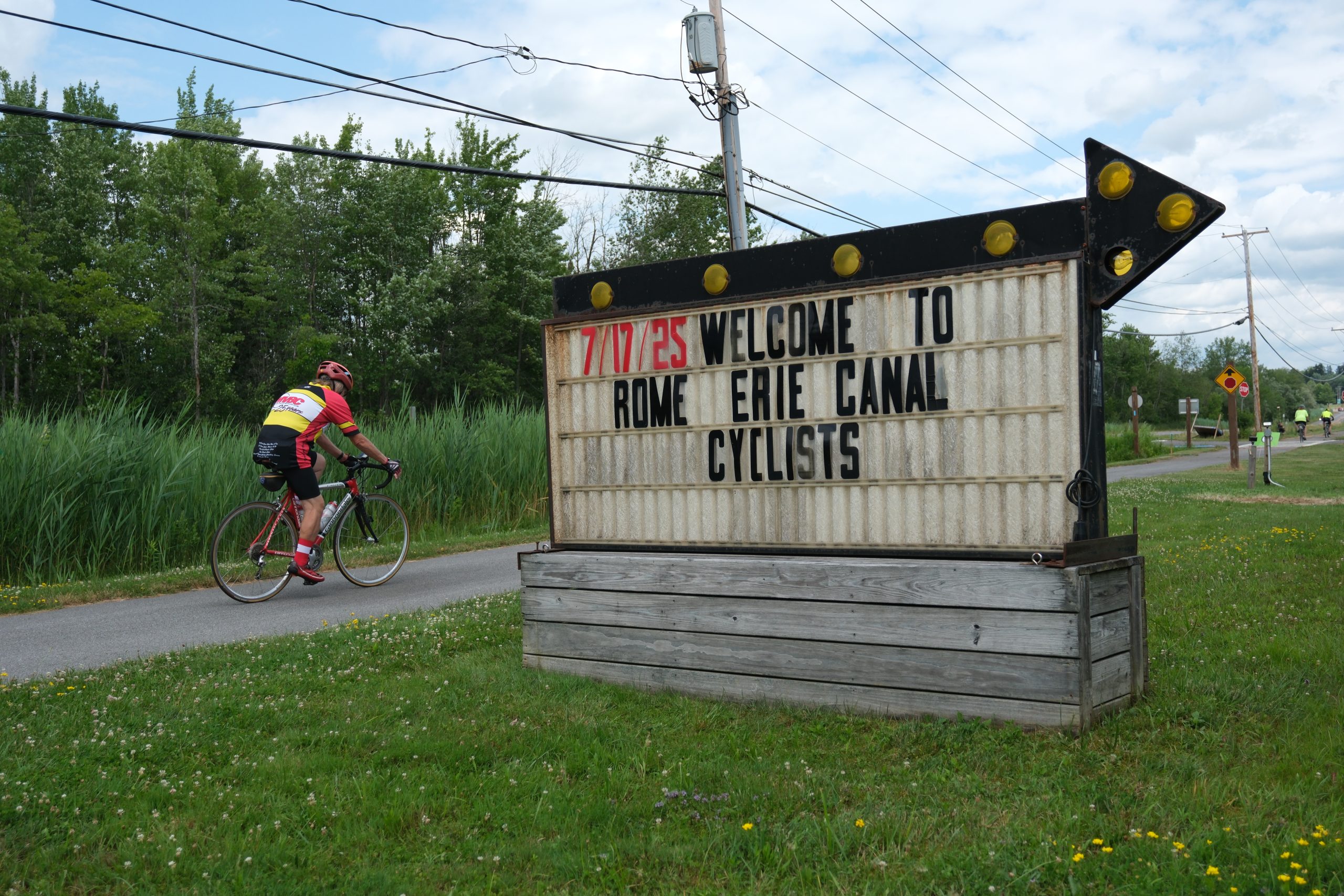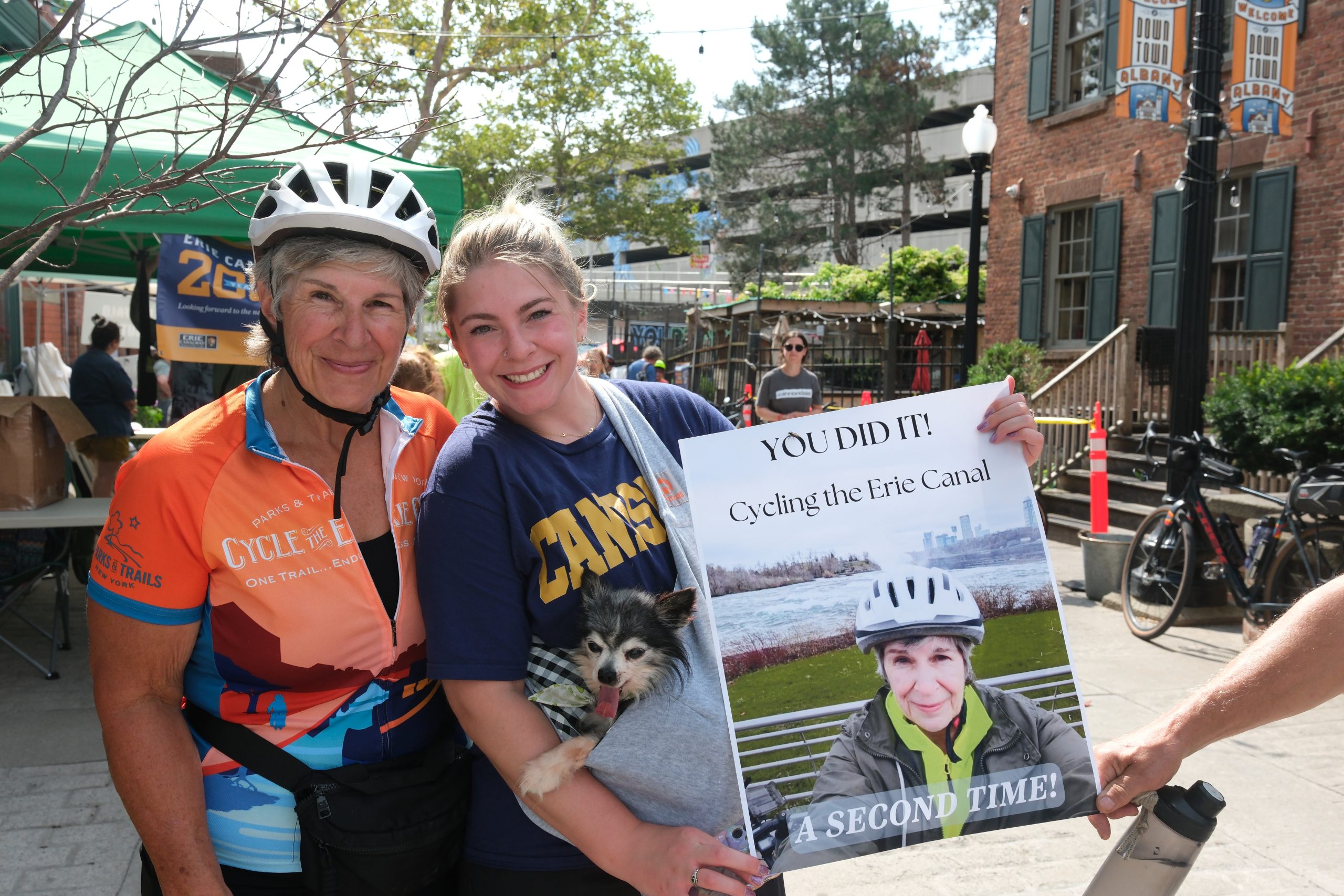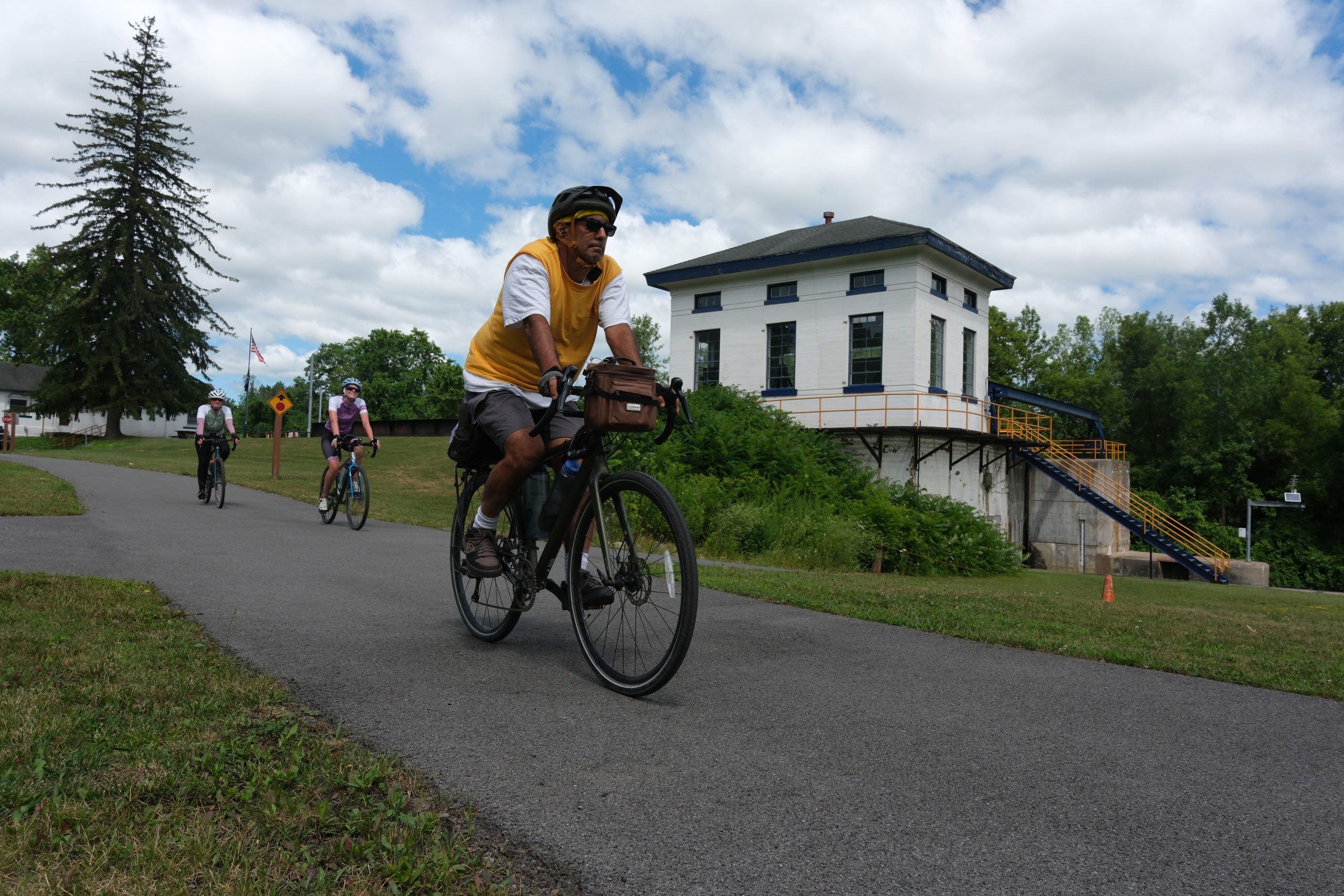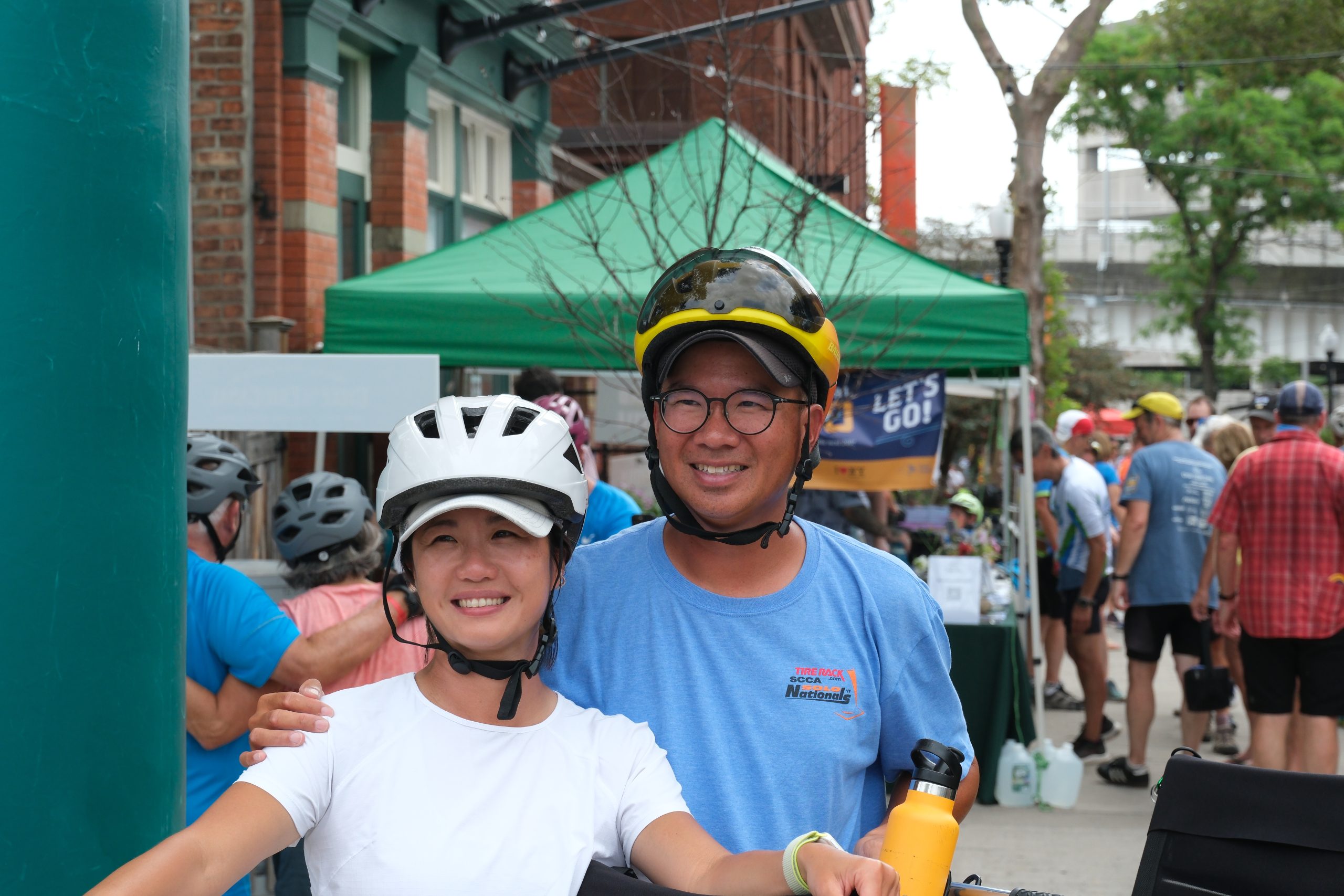Explore New York’s Historic Trail on Two Wheels
Discover the charm and history of upstate New York on Cycle the Erie Canal, a fully supported, eight-day bike tour along the legendary Erie Canalway Trail. Stretching from Buffalo to Albany, this scenic ride follows one of America’s most iconic waterways—through quaint canal towns, the peaceful countryside, and over 400 miles of paved and stone-dust trail. Cycle the Erie Canal blends outdoor adventure, small-town hospitality, and centuries of history into one unforgettable journey across the Empire State.
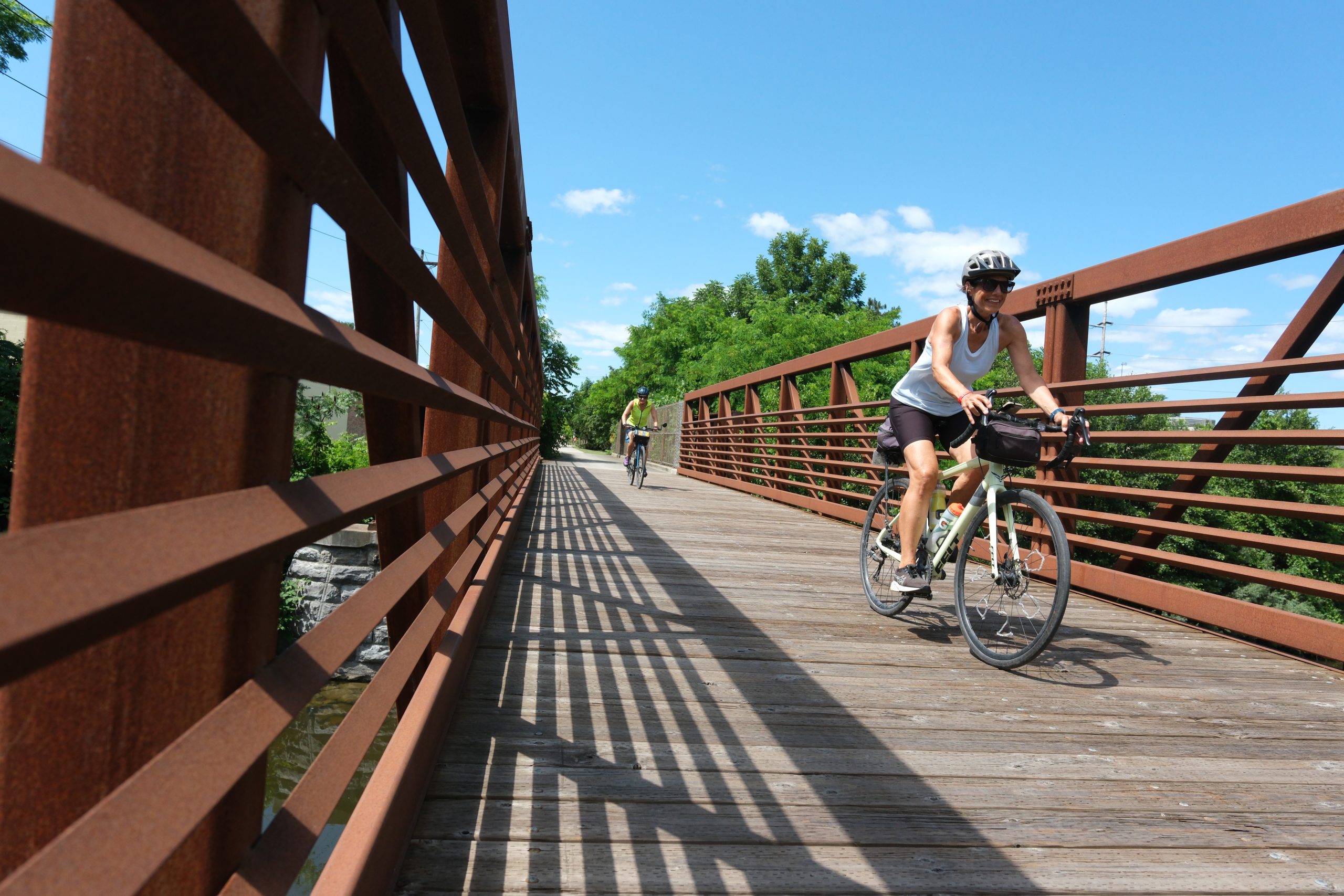
JULY 11-19, 2026
Ready to start exploring? Registration for Cycle the Erie Canal is now open!
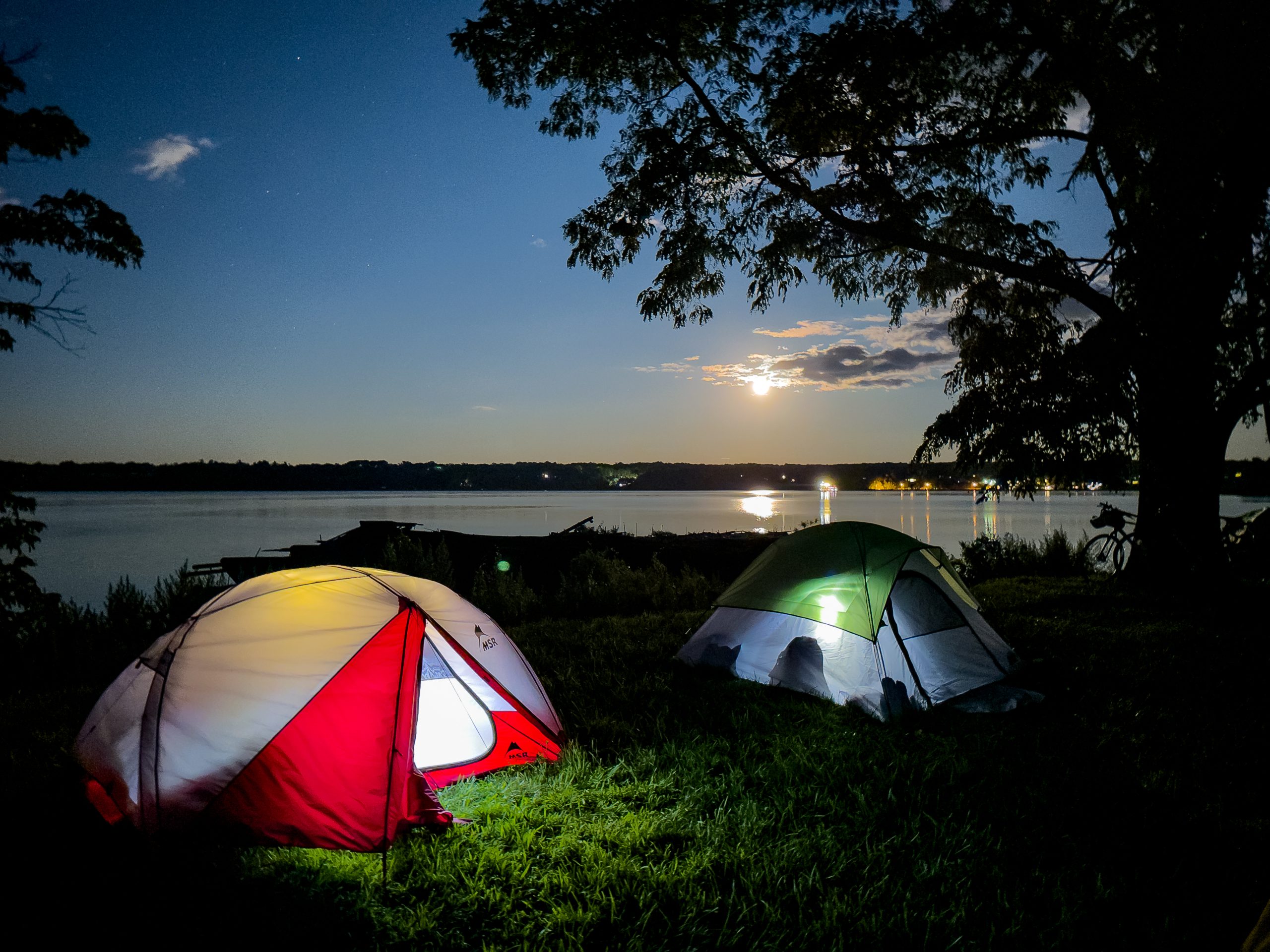
JOIN OUR Informational webinar
We’ll answer all your questions about Cycle the Erie Canal & Cycle the Hudson Valley at our upcoming webinar on November 24 at 5pm.
